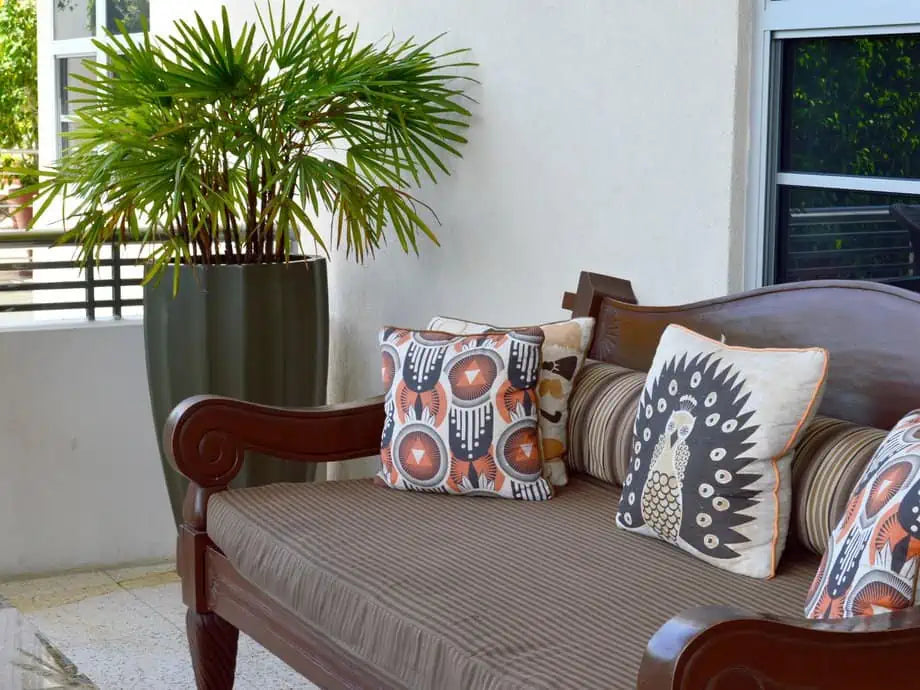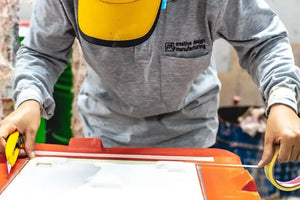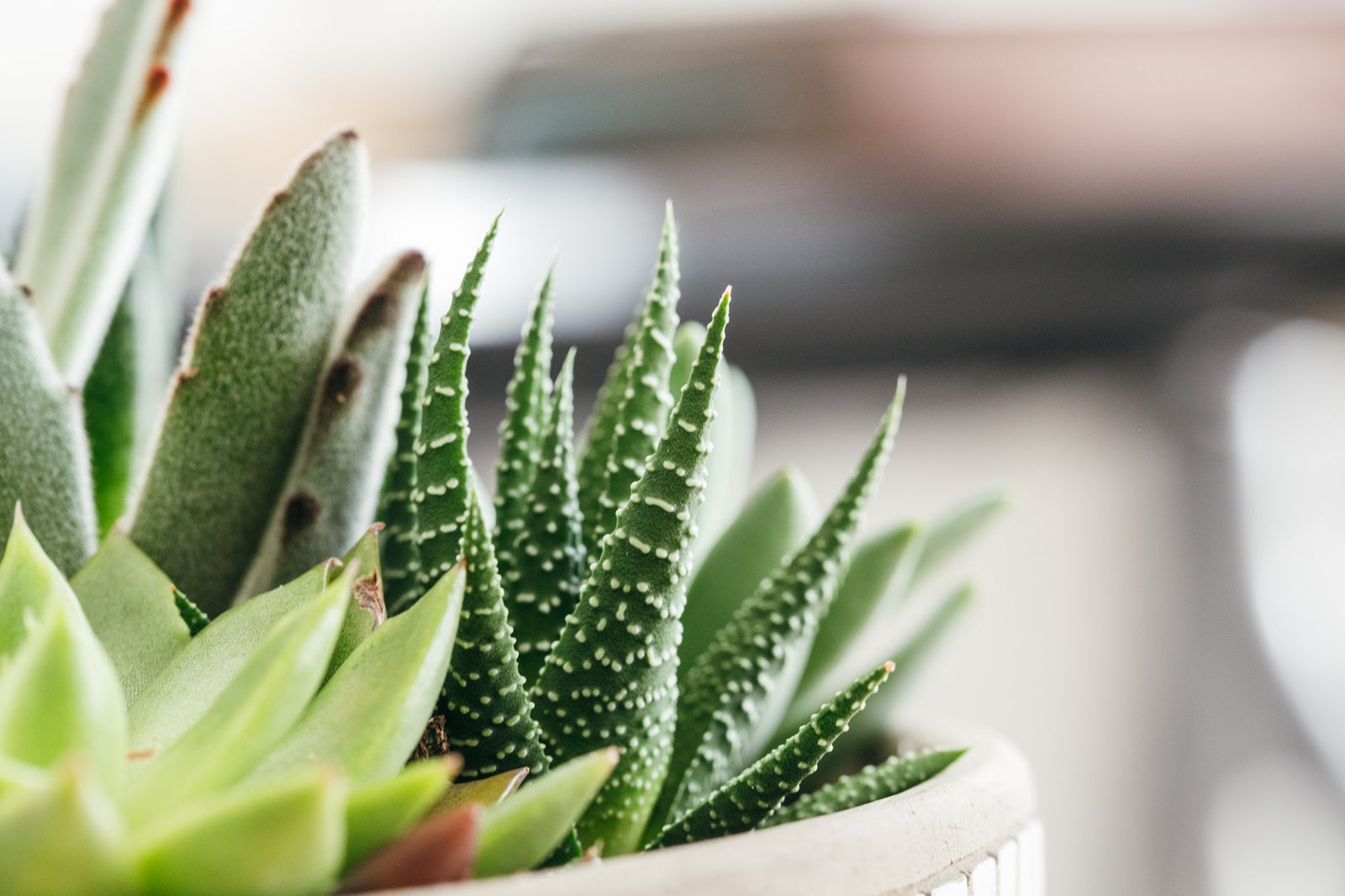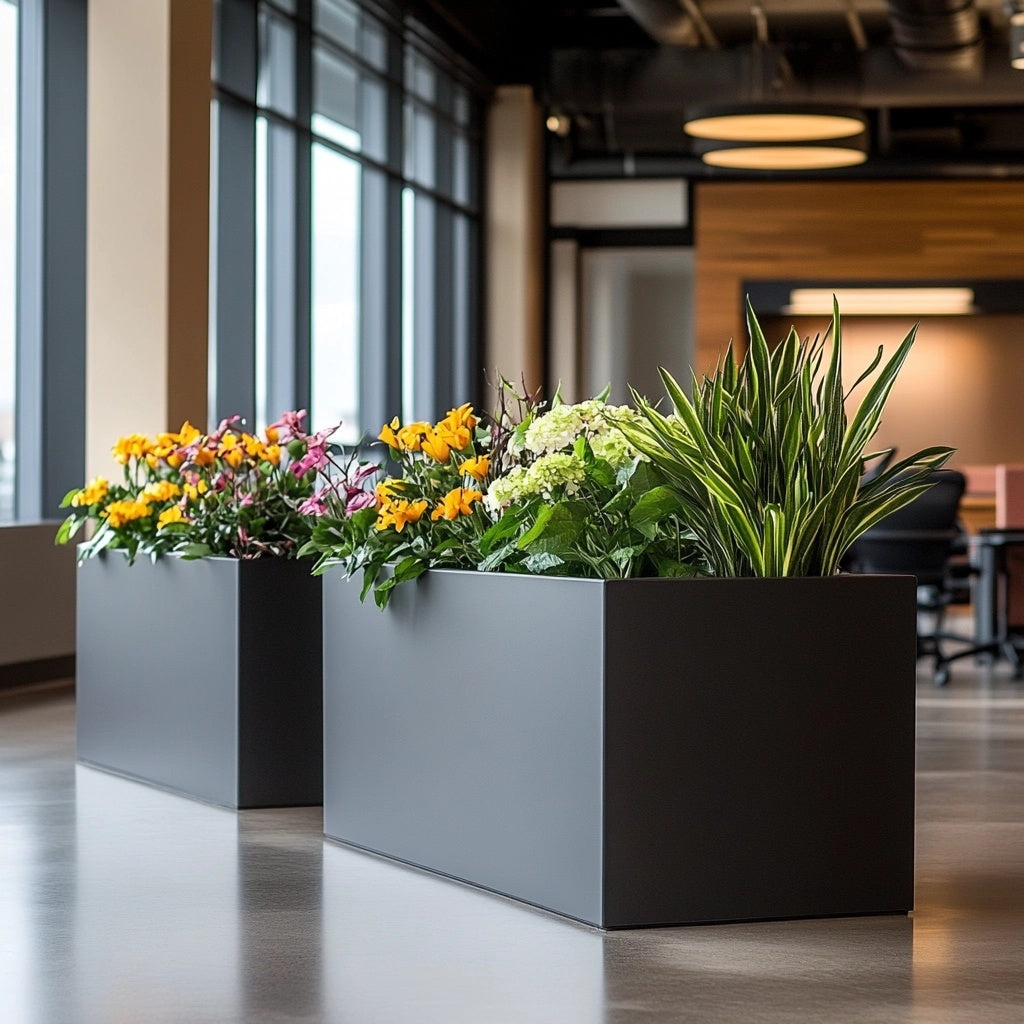If you've come this far, you're probably aware of the benefits of growing a few plants indoors and outdoors. Whether in a residential or commercial space, there's a reason why a 2015 study found that caring for plants reduced psychological and physiological stress!
Knowing all this, you might have picked a plant, figured out where you're going to pot it, and then decided on the planter to pot it in, all the fine details until suddenly, a question arises. Do pots need drainage holes?
Though this question has long puzzled people in the gardening domain, most people still don't really know too much about drainage holes and their function. It's hard to blame anyone for this, but if you're someone who's looking to truly get the most out of healthy houseplants in a living space or commercial area, understanding what a drainage hole is is a good place to start. After all, a plant is only as good as its pot, and one of the key components of a planter is the presence (or not) of drainage holes.
So, without further ado, let's take a deep dive into drainage holes. And you can get back to producing healthy plants!
Ready to enhance your plant game? Discover the best planters on the market with our Fiberglass Planters Collection . Whether you're a plant enthusiast or a greenery lover, our premium planters are designed for optimal plant health and style.
What Are Drainage Holes?
Drainage holes are defined pretty simply as holes that are drilled into the bottom of plant pots to guarantee proper water flow, aeration, and moisture release.
Normally, holes for plant pots with a diameter of 4'' to 12'', typically considered small to medium sized pots, would need a drainage hole of 0.5'' (in the case of a 4'' pot). Large planters would of course need larger drainage holes to ensure excellent drainage. In some cases, these planters will have multiple drainage holes as opposed to the standard ones!
By understanding the measurements of your planter and how it relates to drainage holes, you can choose the right size for your indoor plants and outdoor plants' needs. Now you won't have to fret if the pot you purchase doesn't come without drainage holes--Drill holes yourself!
Want about planter shape? Check out our planter guides by shape !
Do Pots Need Drainage Holes?
Now, for the age-old question.
The shortest answer to this question is yes, pots do need drainage holes. Of course, there will be a few non-believers claiming drainage holes are pointless, with real examples to back it up, but all in all, most gardening experts do advise having pots with holes, especially if you're a novice gardener.
So, why then, do pots need drainage holes?
Excess water
Though many see water as the life source with which plants are able to flourish, excess water is in fact a death sentence for plants. This is a huge issue with beginner gardeners. It takes a bit of time and experience before one is able to provide the correct amount of water to a plant's soil each time. If during this period one is also using a pot without drainage holes, the possibility of over watering increases as there is no real way for proper water flow to occur.
What happens then is that a pool of standing water is left either on the soil surface of the plant, where you can see it but can't do anything to fix it, or it festers at the roots where it can lead to a host of other problems. Understanding proper watering requirements is a skill, but a drainage hole is one of your allies in tackling the issue of over watering.
Need a solution to the problem of excess water? Find out how these round planter ideas can help!
Root Rot
Root rot is where a plant's roots deteriorate as a direct result of overwatering and the absence of a drainage hole. Essentially, what's happening is that the soil at the bottom of your pot is just sitting in water, putting your plant on the edge of a slippery slope that can ultimately lead to its death.
One symptom of root rot is yellow, wilting leaves. If you begin to notice this on your plant, it's a safe bet to check the plant's roots. Are the plant roots discolored and with a mushy texture to them? They might be afflicted with root rot if so.
Having drainage holes in a pot is one of the best ways to ensure your plant never experiences root rot. Provide drainage for the water at the bottom drainage layer of the soil to ensure proper plant health all year round!
Plant outdoors for easier drainage-Check out these rooftop planter ideas !
Salt buildup
Another common issue that occurs when a pot comes without drainage holes is the excess buildup of salt in the plant's potting soil. But before we can get into that, what exactly are salts?
Every time you use tap water or fertilizer on your plants, unabsorbed minerals remain which are harmful to the plant and the plant's soil. These minerals are called salts. Without a drainage hole to flush out the excess water in pot plants, plant care becomes increasingly more difficult because the plant roots absorb these salts.
Once this occurs, potted plants have a harder time taking in moisture, leading to an environment where it's almost impossible for them to thrive. This is why you need a drainage hole--They matter to the health of your plants!
What's the best material for a pot? Read up on these 5 fiberglass planter benefits !
Are Pots Without Drainage Holes Bad?
While we've detailed the importance of drainage holes, unfortunately, many pots in today's market still come without drainage holes. While a solution might be to drill holes yourself, it wouldn't be right to assume everyone has the equipment and knowledge of how to go about doing this. So what happens in a situation where you're forced to plant in pots without a drainage hole?
Is It Safe To Plant In Pots Without Drainage Holes?
Really, there's no definitive answer to this. While most gardeners would likely condemn the idea of plant pots without drainage holes, there are a few that would laugh at such dogmatic thinking and claim that you can still have healthy potted plants in pots without a drainage hole.
In this section, let's play devil's advocate and see how you can go about doing this.
Don't want to take any chances? Check out these square planter ideas for pots with drainage holes!
How Do You Plant In A Pot Without Drainage Holes?
There are a few necessary steps you need to take if you decide to grow plants in pots without a drainage hole. Whether for indoor plants or outdoor ones, these steps should be followed to ensure your plants don't fall prey to the aforementioned issues.
- Use drainage materials like fillers in your pot. Fillers refer to materials such as gravel, pebbles, small rocks, etc. Having layers of these fillers at the bottom of a decorative pot without drainage holes will assist with aeration and excess water flow, preventing a situation like standing water from occurring.
- Add a few coffee filters or newspaper above the fillers. Though these will break down over time, it's useful to have a drainage layer between the soil and fillers to ensure better water flow and aeration.
- Fill the rest of the pot with soil and voila, you've got a pot without drainage holes!
pro tip
If the previous instructions sound like too much, you can also opt for a technique known as double-potting. Double-potting refers to potting a plant in a smaller pot with a drainage hole, only to then place that potted plant into a larger pot without a drainage hole. Every time you water said plant, remove the smaller pot and get rid of the excess water from the larger one.
All you have to do then is put it back in its place! Why not this Brisbane Tall Corner Planter for use as the larger pot?

Double-potting is a great way to get around the issue of owning a beautiful pot you so desperately want to use but you decide not to because it doesn't have a drainage hole. It's a relatively simple solution because you can often just use the plastic nursery pot most plants come in when you purchase them. Every plastic nursery pot comes with a drainage hole so the work is already done for you!
How do you install a planter? Read this expert guide on installing fiberglass planters !
What Potted Plants Don't Need Drainage Holes?
While we've discussed what you can do if you're using pots without drainage holes, sometimes you're lucky enough to come across a plant that actually prefers to be sitting in water. Let's take a look at a few.
- Hydroponics like the Anthurium, Lucky Bamboo, and Peace Lily. These plants can actually live in water so you don't have to worry about planting them in pots without drainage holes. As a tip, choose glass and see-through planters for a dazzling display of nature!
- Perennials like the Cattail, Japanese Water Iris, and Southern Blue Flag. These are great plant choices that will stay healthy even if you accidentally go overboard with the watering.
- Water plants like the Lotus, Water Poppy, and Lizard's Tail. To really lean into that aquatic look with your gardening, there are no better plants than these--Go for this Large River Rock Planter for that added wow effect!
How do you keep your pots fresh? Learn about fiberglass planter maintenance!
The Ideal Planter
All this information about pots without drainage holes and pots that have excellent drainage can make even the most seasoned green thumb confused. To summarize, let's have a quick rundown of the ideal planter.
the ideal planter is...
- One that comes with a drainage hole for good airflow and moisture run through. If you are to plant in pots without a drainage hole, understand how to do so, so you don't end up killing your plant.
- One that caters to the individual requirements of your plant, to ensure proper plant care is possible. Look online for specific plant care and more tips on how to get the best out of your planters.
- One that satisfies both you and your plant, so take your time and choose wisely!
Want to know about different pot shapes? Check out this comprehensive planter shape guide !
Elevate Your Plant Game With JBD Concepts' Fiberglass Planters Collection
Now that you're armed with knowledge about the importance of drainage holes and how to handle pots without them, it's time to elevate your plant game!
Explore our Fiberglass Planters Collection, where you'll find the ideal planters designed for optimal plant health and style. Whether you're a seasoned gardener or just starting out, our premium planters with drainage holes are a must-have for your indoor and outdoor plants.
Visit our Fiberglass Planters Collection page today and discover a world of possibilities to create the perfect environment for your beloved plants, or just simply contact us if you have any questions in mind. Your journey to healthier and happier plants starts here!




















